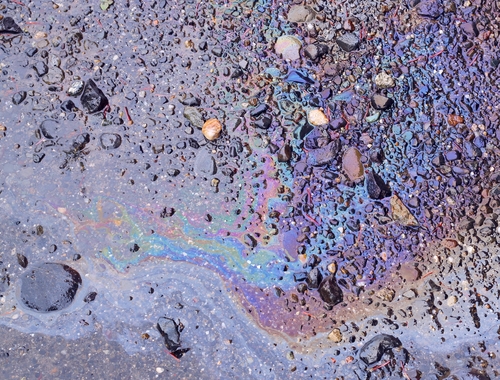Tips for Assessing Applicability with the SPCC Rule
 |
Tip—Know the qualifying factors for coverage under the SPCC rule. The SPCC rule applies when the following are met at a facility*:
- The facility stores, transfers, uses, or consumes oil or oil products, such as diesel fuel, gasoline, lube oil, hydraulic oil, adjuvant oil, crop oil, vegetable oil, or animal fat; and
- The facility stores more than 1,320 U.S. gallons (gal) in total of all aboveground containers (only count containers with 55 gal or greater storage capacity) or more than 42,000 U.S. gal in completely buried containers; and
- The facility could reasonably be expected to discharge oil to navigable waters of the United States or adjoining shorelines, such as lakes, rivers, wetlands, and streams.
Tip—Know how to determine if there is a reasonable expectation of a discharge to navigable waters. According to the U.S. Environmental Protection Agency (EPA), there are a number of things to take into account when making this determination.
- Consider the geography and location of the property relative to nearby navigable waters and adjoining shorelines;
- Assess whether ditches, gullies, storm sewers, or other drainage systems on the property may transport an oil spill to nearby navigable waters or adjoining shorelines;
- Estimate the volume of oil that could be spilled in an incident and how that oil might drain or flow from the property as well as the soil conditions and/or geographic features that might have an impact on the flow toward navigable waters or adjoining shorelines; and
- Take into account whether precipitation runoff could transport oil into navigable waters or adjoining shorelines.
TRAC360 for SPCC provides all of the PE-written and reviewed templates that you need to create your facility-specific required plans, checklists, and training. See how it can solve your top compliance challenges. Find out.
When making the assessment, do not include man-made features such as dikes, equipment, or other structures that might prevent, contain, hinder, or restrain the flow of oil. Rather, assume these man-made features are not present when making your determination. Using all the considerations above, if it is determined that an oil spill can reasonably flow to navigable waters or adjoining shorelines, the SPCC rule applies.
In addition, under 112.1(d)(4), the SPCC rule also exempts completely buried storage tanks, as well as connected underground piping, underground ancillary equipment, and containment systems, when the tanks are subject to all the technical requirements of 40 CFR Part 280 or a state program approved under the Underground Storage Tank regulations at 40 CFR Part 281. Although these tanks are exempt from the SPCC requirements, they must still be marked on the facility diagram if the facility is otherwise subject to the SPCC rule under 112.7(a)(3).
The Ultimate SPCC Compliance Tool
TRAC360 for SPCC is a powerful application that simplifies compliance with EPA’s Spill Prevention, Control, and Countermeasure rule. Whether you need help creating your facility-specific SPCC Plan, writing inspection checklists for your tanks, or training your oil-handling workforce, TRAC360 is there to help. Learn More.
Tip—Understand what to do if there is no reasonable expectation of an oil spill reaching navigable waters or adjoining shorelines. When there is no reasonable expectation for an oil spill to reach navigable waters or adjoining shorelines, the SPCC rule does not apply, and there is no requirement to prepare an SPCC Plan. Keep in mind, however, spill cleanup remains a responsibility, and the EPA recommends contacting the state environmental agency concerning requirements for cleaning up oil spills to soil only. In addition, the EPA recommends that owners and operators document all reasons for concluding an oil spill cannot reach navigable waters and adjoining shorelines for demonstration purposes in the event of an inspection.
Tip—Know what basic information is required in an SPCC Plan. Although SPCC plans vary by facility, the following information will be required in all SPCC plans:
- A list of the oil containers at the facility by parcel (including the contents and location of each container);
- A brief description of the procedures to be used to prevent oil spills—for example, steps that are used to transfer fuel from a storage tank to a vehicle that reduce the possibility of a fuel spill;
- A brief description of the measures, such as secondary containment, installed to prevent oil from reaching water;
- A brief description of the measures to be used to contain and clean up an oil spill to water; and
- A list of emergency contacts and first responders.
*Following passage of the Water Resources Reform and Development Act of 2014, agricultural facilities should consult the state or the EPA for applicable SPCC criteria.

you could offer examples of adjuvant oils –